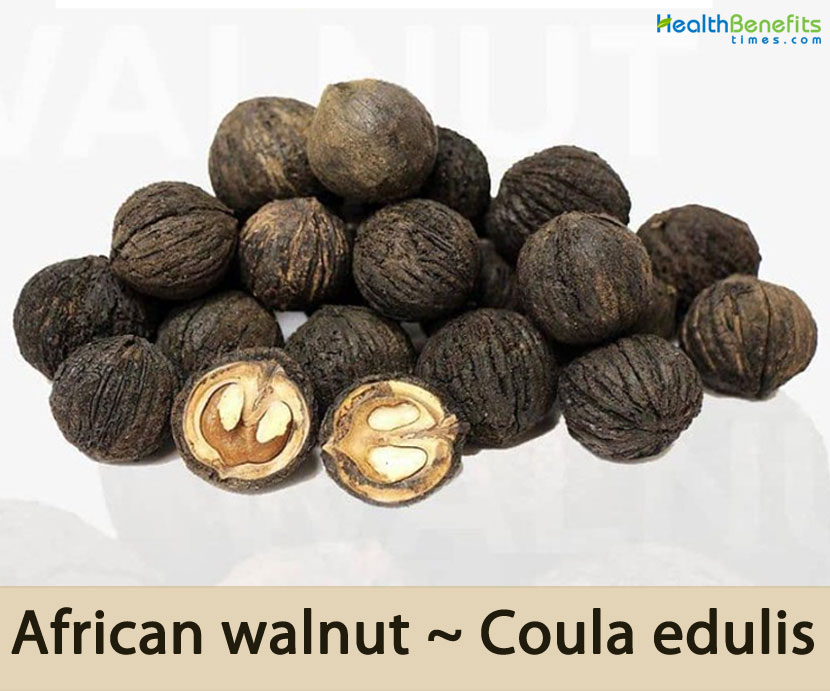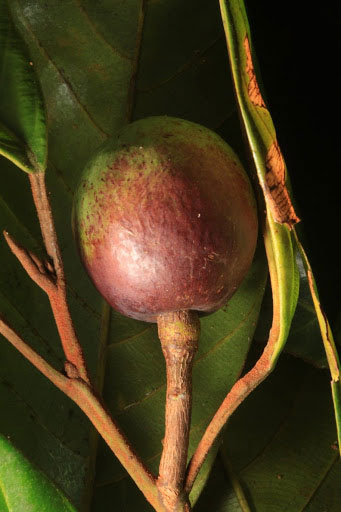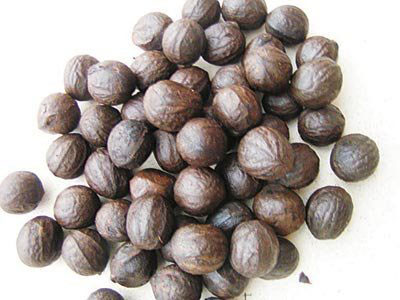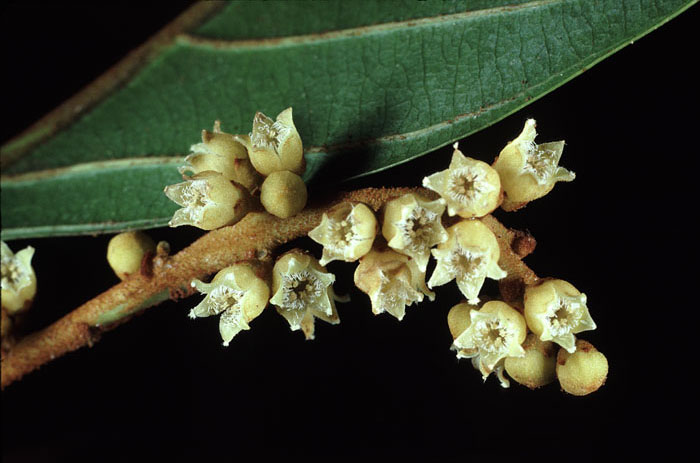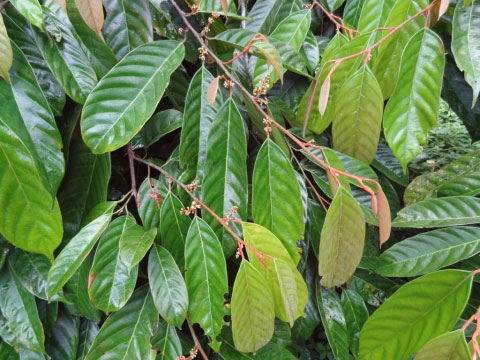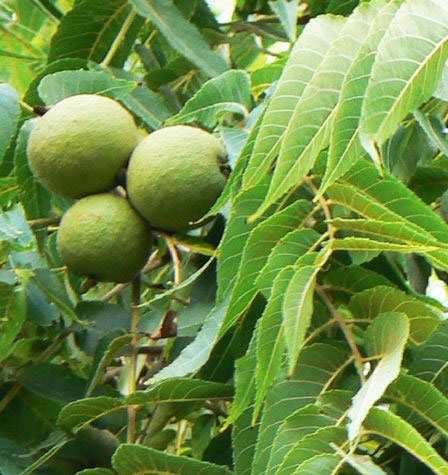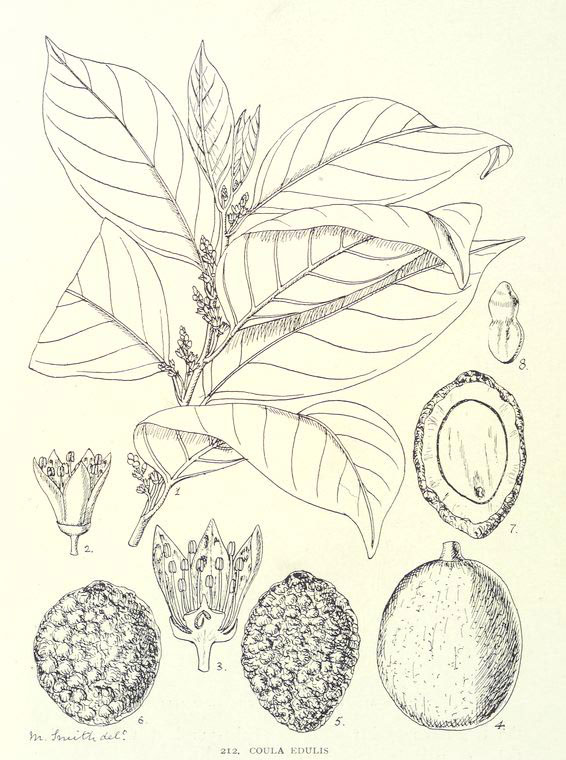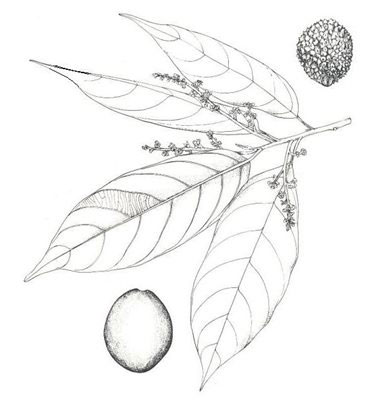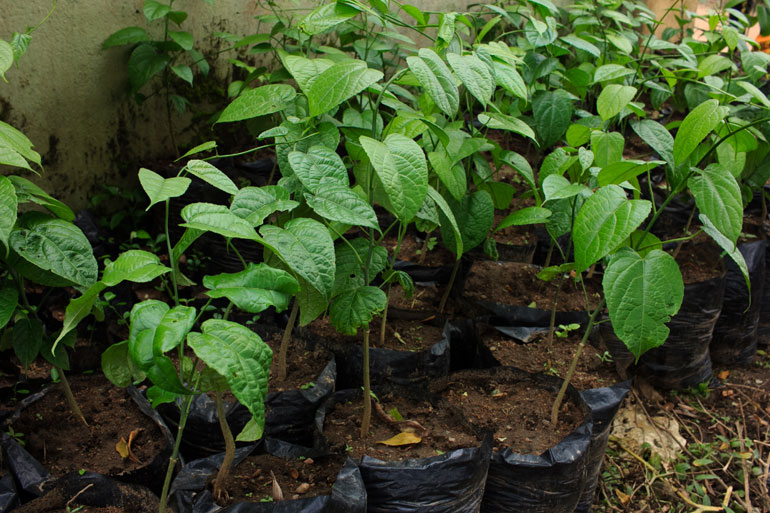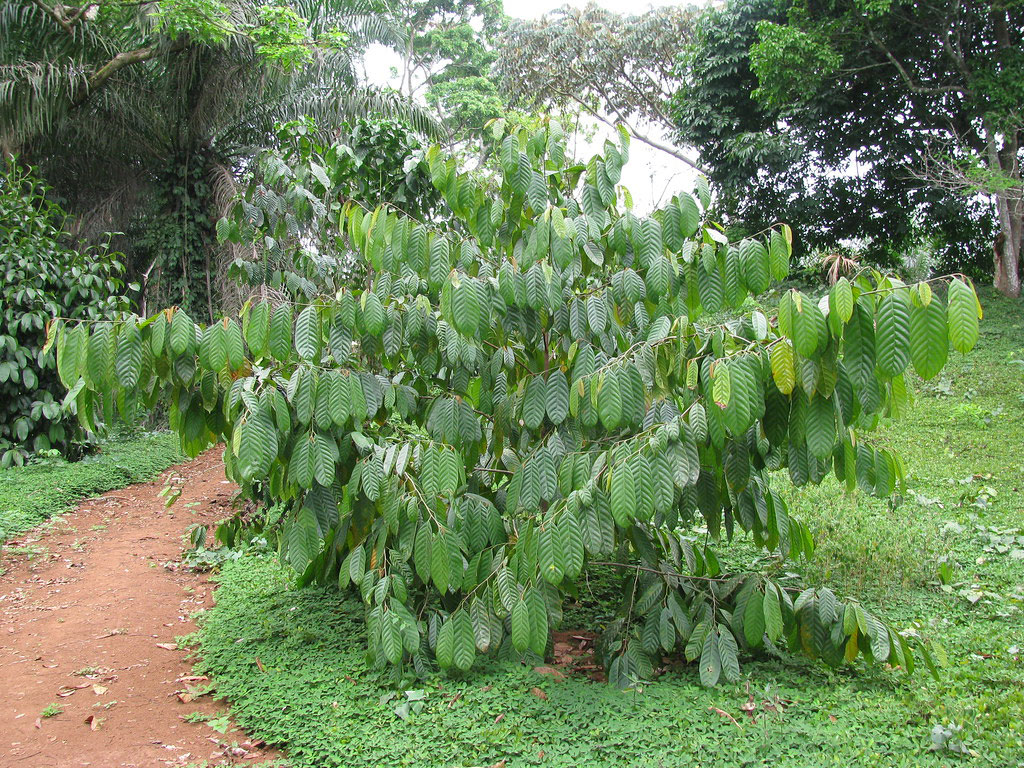| African walnut Quick Facts | |
|---|---|
| Name: | African walnut |
| Scientific Name: | Coula edulis |
| Origin | Tropical West African countries, stretching from Sierra Leone to the Democratic Republic of Congo |
| Colors | Immature fruits are green and turn dark brown to black as they reach maturity |
| Shapes | Globose or ellipsoid drupes 6 cm – 10 cm long and 3 cm – 11 cm wide |
| Taste | Bland |
| Health benefits | Prevents Cancerous Diseases, Digestive Health, Relief Hiccups, Improve Menstrual Flow, Treats Toothache, Good for Immune System Health, Cure Headache, Anti-ageing properties, Prevents Liver Damage, Prevention of Cardiovascular Diseases, Reduces the Risk of Diabetes, Good for Bone health, Good for Pregnant Women, Boosts Fertility, Moderates Cholesterol Level, Promote Brain Health, Helps in Weight Management, Prevents Sleep Disorder, |
| Name | African walnut |
|---|---|
| Scientific Name | Coula edulis |
| Native | Tropical West African countries, stretching from Sierra Leone to the Democratic Republic of Congo and then to Nigeria and other West African countries. It is found in Cameroon in evergreen forest up to the loop of the Dja, Central African Republic, Congo, Gabon and Niger. Its range in Nigeria includes Uyo, Akamkpa, Akpabuyo, Lagos, Akure, Kogi, Ajaawa, Ogbomosho, Ibadan |
| Common Names | Gabon nuts, African walnuts, congowood, tiger wood, Attia, Bodwe, Ekom, Emumu, Engom, Ewome, Ewoumeu, Fiya-towo, Gaboon-nut, Ivianlegbe, Kommol, Kumen, Kumini, Kumumu, Kumunu, Mengom, Ndokei, Ngoma, Noyer du pays, Slah, Sweh, Tokei, Udi, Woula |
| Name in Other Languages | English: African Walnut, Gabon Nut French: Noisetier d’Afrique |
| Plant Growth Habit | Woody, evergreen, perennial climber or medium-size to large tree |
| Growing Climates | Dense evergreen forest, semi-deciduous forest, rain forests, evergreen or dense deciduous forests, coves, bottomlands, abandoned agricultural fields, rich woodlands and dominant in primitive forests |
| Soil | Grows on moist, deep, fertile, well-drained loam soils and in silt clay loam soils |
| Plant Size | Up to 25–38 m in height and 80 cm in diameter |
| Bark | Gray, cracked, exfoliating in thick plates often rectangular, fibrous, brittle, yellow-brown slice, exuding very fine white droplets especially in young trees |
| Stem | Stem can be up to 16 cm in girth and dark grey when old, but is green and glabrous when young |
| Leaf | Leaves are arranged alternately, simple, 10–30 cm long and 4 cm broad, with an entire margin and an acuminate apex. |
| Flowering season | January to July |
| Flower | Male flowers are in a narrow raceme-like panicle that is as long as the leaves, with one or two female flowers near the base. The flowers are arranged alternately on the axis of the raceme inflorescence |
| Fruit Shape & Size | Globose or ellipsoid drupes 6 cm – 10 cm long and 3 cm – 11 cm wide containing sub globular seeds |
| Fruit Color | Immature fruits are usually green in color but turn dark brown to black as they reach maturity |
| Seed | Round and dark brown at maturity |
| Taste | Bland but if taken immediately after consumption it leaves a bitter taste in mouth |
| Plant Parts Used | Stem bark, leaves, seeds and roots |
| Season | August to January |
| Health Benefits |
|
| Precautions |
|
Plant Description
African walnut is a woody, evergreen, perennial climber or medium-size to large tree that normally grows about 25–38 m in height and 80 cm in diameter with a large, dense crown casting a deep shade. The bole is generally short, bossed, branched low down, and sometimes slightly swollen at the base, not usually exceeding 6 meters in length and 80 cm in diameter. The plant is found growing in dense evergreen forest, semi-deciduous forest, rain forests, evergreen or dense deciduous forests, coves, bottomlands, abandoned agricultural fields, rich woodlands and dominant in primitive forests. The plant does not require a special soil for its growth. It grows on moist, deep, fertile, well-drained loam soils and in silt clay loam soils. It can be found in the top canopy of forest as well as the lower story and has no special soil requirements.
Stem can be up to 16 cm in circumference and dark grey when old, but is green and glabrous when young. Bark is gray, cracked, exfoliating in thick plates often rectangular, fibrous, brittle, yellow-brown slice, exuding very fine white droplets especially in young trees.
Leaves
Leaves are arranged alternately, simple, 10–30 cm long and 4 cm broad, with an entire serrated margin and an acuminate apex. The petiole may be up to 5 cm long. They are shiny green above and red below, base sometimes rounded, apex acuminate; young leaves are covered with red hairs.
Flower
African walnut is a monoecious plant that has separate male and female flowers on the same plant. The male flowers are in a narrow raceme-like panicle that is as long as the leaves, with one or two female flowers near the base. The flowers are arranged alternately on the axis of the raceme inflorescence. The style is stout and quadrangular with four spreading stigmas. There are many stamens, about 40 in number. Flowering normally takes place in between January to July.
Fruit
Fertile flowers are followed by globose or ellipsoid drupes about 6 cm – 10 cm long and 3 cm – 11 cm wide containing sub globular seeds. Flesh surrounding the kernel is 5–6 mm thick, smooth in texture and can be red or green. The kernel shell is extremely hard and makes germination difficult. Immature fruits are usually green in color but turn dark brown to black as they reach maturity. The seeds are round and dark brown at maturity. The drupes are usually found under the mother trees.
Health benefits of African Walnut
African walnuts are seasonal fruits with huge nutrition and health benefits. These nutritional contents in walnuts offer huge benefits to the human body in several ways. They are have been known as a good source of nutrients such as vitamins and minerals, antioxidants and some plant compounds that the body requires daily for overall maintenance and development. African walnuts help to prevent some mineral and vitamin deficiencies. Eating this fruit helps to protect you from certain chronic diseases and supply other range of benefits which are detailed below.
1. Prevents Cancerous Diseases
Regular consumption of walnut fruits like two or more times a week can prevent cancers of different types such as breast cancers and pancreatic cancer.
The above theory has been confirmed by scientific researchers through the presence of natural antioxidants in it as well as phytosterols and ascorbic acid which all contributed to preventing the growth of cancer in the body.
2. Good for Pregnant Women
African walnut is good for pregnant women because they are rich in polyunsaturated fatty acids and other nutrients that prevent unborn babies from developing food allergies. An omega-3 fatty acid is an important fatty acid contained in African walnuts helps to improve baby’s cognitive development and vision, and also lower some allergy risks. Leaves of African walnuts are also used by traditional medicine professionals to treat miscarriages and pregnancy-related problems.
3. Moderates Cholesterol Level
Regular consumption of these nuts contributes to the reduction of low-density lipoprotein (LDL) that is bad cholesterol in the body.
African walnuts are edible single-seeded stone drupe fruits known for their white-cream seed enclosed by a black thick wall. The plant is mostly grown for its nuts which are cooked and sold in most Nigerian markets and primarily serves as snacks.
4. Promote Brain Health
Primary research indicates that walnuts may play a role in maintaining and improving brain health. Walnuts are rich in alpha-linoleic acid, a plant-based omega 3 fatty acid. They also consist of more polyphenolic compound than any other nut. Both omega 3 fatty acid and polyphenols are considered dangerous brain foods that may counteract oxidative stress and inflammation; these are two drivers of cognitive decline.
5. Prevents Sleep Disorder
African walnuts consists of melatonin in the nuts which make them better for consumption mainly before going to bed in other to aid better sleep and tackle some sleep disorders which are likely to occur at night. Tryptophan is also present in African walnuts which are the major source of neurotransmitter, melatonin, and serotonin which control sleep-wake cycles and prevent insomnia.
Walnuts have natural content that helps to promote quality sleep. People who find it difficult to sleep well at night or during the day should eat a reasonable amount of African walnuts before going to bed so as to help to suppress sleep disorder and its related causes.
6. Helps in Weight Management
Walnuts are good for weight loss and management when added to the daily diet. It has been proven that an ounce of walnut consists of quality fiber, protein, and fat that help make the stomach to feel full. Presence of vitamin B-7 works in hand with fiber to improve the metabolism process of the body and appropriate checking of body weight.
7. Good for Immune System Health
Manganese is a trace mineral in the body that occurs naturally in African walnuts together with zinc, copper, and iron that are effective on immune development and functions.
Again, vitamin C is an essential vitamin and antioxidant that play different vital roles in the body. Various immune system cells such as phagocytes cells and others need vitamin C for proper functioning and prevention against disease organisms.
8. Boosts Fertility
African walnut are considered as fertility boosters and it has been seen as well from medical research that men who eat African walnuts on a daily basis are prone to have increased sperm quality.
However, some of the foods we eat have a great role to play in our sex life which on the negative sides can limit fertility. African walnut is one of the organic fruits that have proven its effectiveness in boosting the rate of sperm production in men and as well prevents infertility. Presence of healthy fatty acids in these nuts such as omega-3 fatty acids among others plays a great role in sperm development and fertility boosting in women as well as men.
9. Improve Menstrual Flow
African walnut is totally healthy for men and women. Walnut leaf extract is another natural antioxidant that plays a good role in regulating menstrual flow. It helps to improve proper menstrual flow and prevent menstrual flaws experienced by several women while menstruating.
10. Prevention of Cardiovascular Diseases
Researchers reveal that the African walnut is very effective for minimizing the risks of cardiovascular diseases such as heart attack and coronary artery disease (buildup of plaque in the arteries thus restricting blood supply to the heart).
Consuming walnuts as an after meal dessert has been proven to be effective for keeping the arteries flexible and for reducing the damage caused by fatty foods to the arteries. This is due to the high content of phytosterols, omega 3 fatty acids and antioxidants in this nut.
Walnuts equally consist of high amounts of L-arginine, which is an essential amino acid that can be converted to nitric oxide. It is notable that nitric oxide is essential for smoothening the inner walls of the blood vessels, thus helping the blood vessels to relax.
11. Reduces the Risk of Diabetes
Consuming African walnuts on a daily basis helps to reduce the risk of hyperglycemia, high blood sugar which is the major cause of type-1 and type-2 diabetes mellitus.
Experiments have shown that African walnut is one of the best fruit for people that want to maintain a healthy blood sugar level and prevent the risk of obesity. Scientific research shows that 100 grams of shelled African walnuts consists of 13.14g of carbs and zero cholesterol which makes it very good for reducing the causes and effects of overweight.
12. Good for Bone health
African walnut consists of anti-inflammatory properties that help to prevent bone inflammatory diseases. Other nutrients such as calcium and potassium are important bone-density minerals that help to improve bone strength and limit the risks of bone diseases such as osteoporosis.
13. Digestive Health
As we all know that African walnut are high in fiber content, this helps bowel movement. Fiber binds the food together making it easier to be removed with feces. African walnut leaves and barks have also been used in folk medicines for treating individuals suffering from gastroenteritis diseases such as dysentery, stomach pain, diarrhea and vomiting. Decocted African walnut leaves and seeds are effective for relieving abdominal pains.
14. Prevents Liver Damage
African walnut consists of effective antioxidants such as tannin, tellimagrandin, flavonol morin, quinine juglone and polyphenols that help to prevent the liver from damage against food chemicals and terminate free radicals from the body system. And some other antioxidants that act as anti-aging properties like ellagic acid, melatonin, and others.
15. Anti-ageing properties
African walnut is a rich source of antioxidants such as ellagic acid, melatonin, manganese, vitamin E, polyphenols and selenium thus can be used for preventing the onset of early ageing as well as prevents cellular damage.
16. Cure Headache
Research has revealed that the leaf extract of the African walnut is very effective for treating headache.
17. Relief Hiccups
The leaves extracts of the African walnut are taken to stop and relief continuous and prolonged hiccups.
18. Treats Toothache
The nuts, leaves, and barks of the African walnut are believed to be effective for treating toothache.
Traditional uses and benefits of African walnut
- The bark is used locally to produce rinses or enemas for loin pains or kidney problems.
- Decocted bark fragments are used against rheumatism and, applied as a poultice, they relieve pain.
- The stomachic bark decoction is used for dysentery in Liberia.
- Powdered bark is used in Equatorial Africa for dressing sores, and in decoctions to stimulate appetite and counteract anemia, or in enemas for dysentery.
- Liberians believe the fruits remove boils.
- Boiled seeds are also eaten to improve sperm count in men.
- Leaf juice is used to improve fertility in women and regulate menstrual flow.
- Ayoola et al. reported the use of African walnut in the treatment of stomach disorders and for controlling high blood pressure.
- The bark is brewed as a tea for use as a laxative and is chewed for toothache.
- Fruits are edible and used for various purposes, including masticatory, thrush, anti-helminth, syphilis and also as an antidote against snake bites.
- They are said to tonify the kidneys, strengthen the back and knees and moisten the intestines.
- They are believed to stop asthma and are prescribed to be taken between bouts of asthma but not for acute asthma.
- They are used by the elderly to cure constipation and flatulence.
- The leaf extracts were used to reduce hiccups.
- It promotes quality sleep, can be used for treatment of the gastrointestinal tract, is ideal to help pregnant women avoid miscarriages
Culinary Uses
- The nut is eaten raw or cooked.
- It can also be fermented and used as a condiment.
- It can be eaten raw, grilled or boiled
- The nuts can be used in recipes and mixed with meats.
- Leaves and young shoots are occasionally eaten with cooked rice in some parts of West Africa.
Other Facts
- The wood is very hard, heavy, and durable.
- It is resistant to attacks of fungi, termites, and marine borers.
- It is used in turnery, heavy carpentry, piles for bridges, etc.
- The seed is also fermented and used as a condiment.
- Heartwood is dark red or violet brownish-red with dark brown veins; it is clearly demarcated from the 3 – 4cm wide band of pinkish-brown sapwood.
- The wood is very hard, very heavy, elastic, and very durable, resisting water well and resistant to fungal and insect attack, particularly termites and marine borers.
- The wood has a fairly high blunting effect upon tools, stellite-tipped and tungsten carbide is recommended.
- In great demand, the wood is used in turnery and as a substitute for mahogany, as well as for heavy carpentry, industrial flooring, piles for bridges and railway ties.
- The wood produces a suitable charcoal.
- The seed takes 4–6 months to mature.
References:
https://pfaf.org/user/Plant.aspx?LatinName=Coula+edulis
https://en.wikipedia.org/wiki/Coula_edulis
https://gd.eppo.int/taxon/CUWED
http://www.theplantlist.org/tpl1.1/record/kew-2740459
https://jomped.org/index.php/jomped/article/view/47/132


